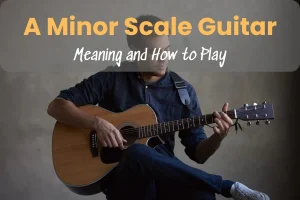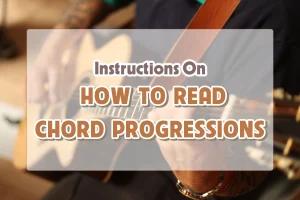The quest to find accurate and comprehensive Where Is My Mind electric guitar tabs becomes not just a search for notes on a page, but a journey towards musical enlightenment. “Where Is My Mind?” with its delicate tones and unforgettable riff, calls out to guitarists of all levels.
Our Eguitarmania‘s guide shows more than just the notes; it also shows the techniques and feelings behind the music. This way, you can be sure that what you play is not just a bunch of sounds, but a true version of a classic.

Where Is My Mind Electric Guitar Tabs 3
Pixies – Where is my Mind?
Ahhhhh
Stop.
[INTRO]
Chord progression (played 4 times): E C#m G# A
Lead guitar melody: Play with a clean tone, gently picking each note to capture the song’s delicate feel.
E|—–4—–4-|—-4—–4-|—–4—–4-|-0–0—-0–|
B|–5—–5—-|-5—–5—-|–4—–4—-|-5–5p4–5–|
G|————-|————|————-|————|
D|————-|————|————-|————|
A|————-|————|————-|————|
E|————-|————|————-|————|
[VERSE 1]:
Transition smoothly between chords, maintaining a gentle strumming pattern to preserve the song’s introspective atmosphere.
E C#m G# A
With your feet in the air and your head on the ground
E C#m G# A
Try this trick and spin it, yeah
E C#m
Your head will collapse
G#
But there’s nothing in it
A
And you’ll ask yourself
[CHORUS]
The chorus emphasizes the song’s main question, so play the chords with a bit more intensity without losing the song’s overall dreamy quality.
E C#m
Where is my mind?
G# A
Where is my mind?
E C#m G# A
Where is my mind?
E G# A Am C#m B
Way out in the water, see it swimming.
[VERSE 2] – (E C#m G# A)
I was swimmin’ in the Carribean
Animals were hiding behind the rock
Except the little fish
But they told me, he swears
Tryin’ to talk to me, to me, to me
-CHORUS-
[SOLO]
The solo captures the song’s essence, intertwining with the rhythm section. Focus on the bends and slides to express the solo’s emotive peaks.
E|——————————-|————————-10–12–14^-|
B|–7—7—7–7—————–|——–7–7\10–10–12————–|
G|–9^–9^——–9–7–7–7—–|–7–9——————-bend last—|
D|—————————-9–|———————— note a few–|
A|——————————-|————————-times——-|
E|——————————-|————————————-|
Continue with this pattern, paying attention to the indicated bends (^) and slides ().
-VERSE 1-
-CHORUS-
(just repeat E C#m G# A until the end)
With your feet in the air and your head on the ground
Try this trick and spin it, yeah
Where Is My Mind tab 1
Where is my Mind? – Pixies
Standard Tuning
Standard tuning (E A D G B E) for both rhythm and lead guitar parts.
To get the real feel of the song’s floating vibe, record the lead parts with a clean tone and a little reverb. For the chorus parts, the rhythm guitar can maintain a clean tone while being slightly overdriven to amp up the intensity.
[Intro]
The song opens with a distinctive chord progression that sets the mood. It’s crucial to let each chord ring out to maintain the atmospheric quality of the song.
E5 C#5 G#5 A5
E C#m G# A
With your feet in the air and your head on the ground
Try this trick and spin it, yeah
Your head will collapse, but there’s nothing in it and you’ll ask yourself
[Chorus]
E5 C#5 G#5 A5
Where is my mind? Where is my mind?
Where is my mind?
E G#m A Am (let ring)
Way out in the water, see it swimmin’
C#5 B5
E C#m G# A
I was swimmin’ in the Caribbean
Animals were hiding behind the rock
Except the little fish, but they told me, he swears tryin’ to talk to me to me to me
[Chorus]
[Solo]
B5
E C#m G# A
With your feet in the air and your head on the ground
Try this trick and spin it, yeah
Your head will collapse, but there’s nothing in it and you’ll ask yourself
[Chorus]
E C#m G# A
With your feet in the air and your head on the ground
Try this trick and spin it, yeah
[Outro]
The song concludes by revisiting the intro/verse riff and chord progression, fading out with the ethereal lead line.
E C#m G# A
E C#m G#
Whether you’re playing lead or rhythm, it’s important to capture the spirit of the song and let your emotions shine through.

Left Handed
To make it easier for left-handed players, the tabs will be turned around compared to the right-handed tabs. The fret numbers will stay the same, but the strings will be put in the wrong order.
Left-handed players can read and understand tabs just as well as right-handed players, even though most of it is written from the player’s point of view, looking down at their instrument. Instead of changes in the tablature, playing style is determined by changes in how the guitar is set up (strings and position).
So, left-handed guitarists should use the same tabs as right-handed guitarists, but they should change the stringing on their guitar to match. The low E string should be closest to the ceiling when you play, and the fretboard should show where you put your fingers and make chords.
If you want to learn how to play left-handed, all you have to do is switch these two actions. For example, you can change a right-handed upstroke to a left-handed downstroke. Because tablature doesn’t change based on which hand the player is using, the way the fingers are placed for chords and notes stays the same.
One of the Pixies’ most well-known songs is “Where Is My Mind?” This method can help electric guitar players of either hand learn and play it well.
Ukulele
Depending on how you tune your ukulele, the chords in the song may need to be changed. The following ukulele chord shapes match the guitar chords in the song:
E Major on Ukulele: 1402 or 4442
C#m on Ukulele: 1444
G# on Ukulele: 5343 (This can be a bit challenging due to the ukulele’s fretboard size, so some players may opt for a simplified version or a different voicing.)
A Major on Ukulele: 2100
Focus on the main melody and chords that are in the right tuning range for the ukulele (G C E A for standard soprano, concert, and tenor ukuleles) to make “Where Is My Mind?” by the Pixies work.
The lowest note that the ukulele can play is a low G, which is played in standard GCEA tuning (also known as “re-entrant tuning”), and the highest note that it can play is an A, played approximately two octaves higher, on the 12th fret of the A string. How big or small it is depends on how many frets it has.
Conclusion
Wrapping up our journey, we’ve covered everything from the basic chords to the cool solos that make this song by the Pixies so special. We’ve also looked at how you can play this song on different instruments, like the ukulele, showing how a great tune can sound amazing in many ways.
As we finish this guide, remember, music is all about exploring and making it your own.









